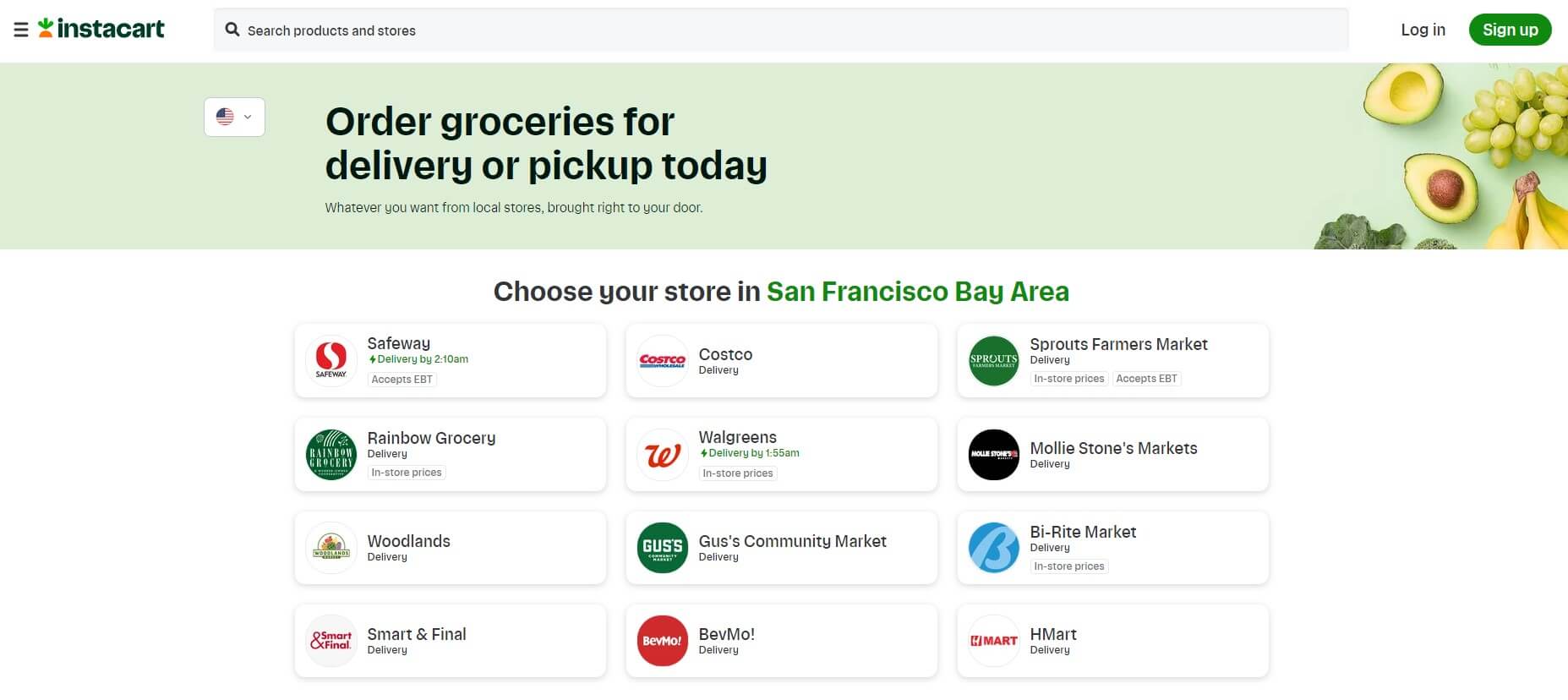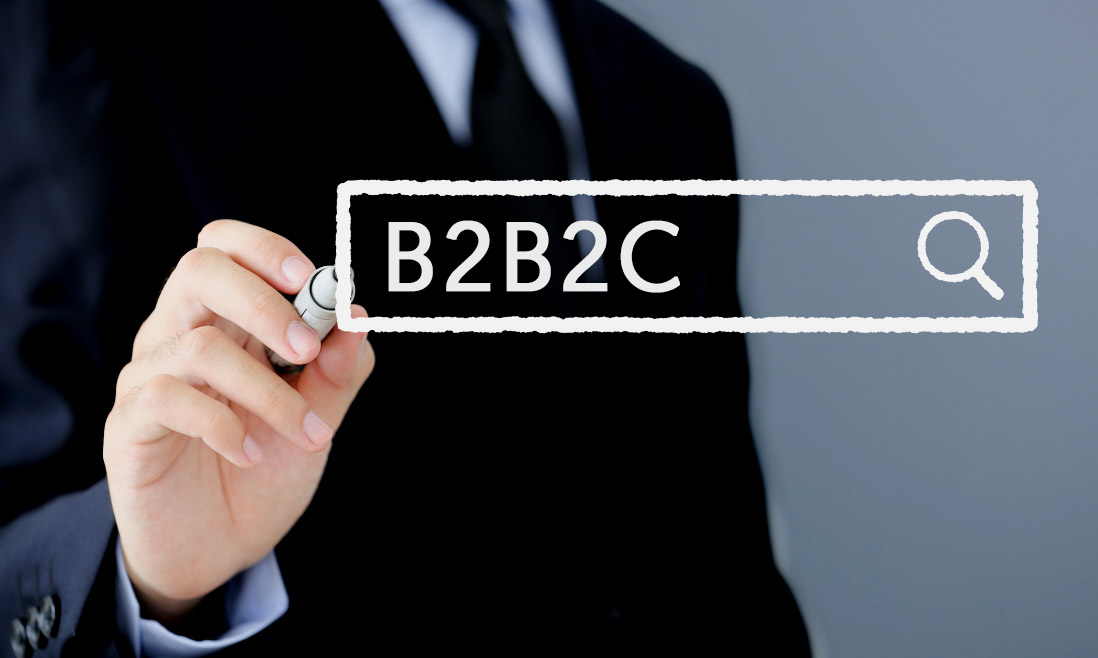Picture this: a dynamic partnership between businesses that not only streamlines the path from product creation to customer doorstep but also enriches the consumer’s journey along the way. It’s a harmonious dance of suppliers and retailers, a strategic marriage of convenience and customer satisfaction. This is the essence of B2B2C, where every letter represents a world of opportunity.
Learning about the B2B2C model can help you grasp the various benefits and decide if it’s the appropriate fit for your company with your staff. In this post, we define B2B2C meaning and present a list of benefits and typical applications for this model.
Contents
What is B2B2C?
The B2B2C business model, short for business-to-business-to-consumer, represents a unique and innovative approach to commerce. It’s a dynamic ecosystem where two distinct types of businesses collaborate to serve the end consumers. B2B2C bridges the gap between suppliers of products or services and the online retailers who connect these offerings with the end-users.
That means we have company A partners with company B to distribute their products/services to the end consumers. In this case, customers know the products/services are from Company A.
At its core, B2B2C thrives on partnership and synergy. On one side, you have the businesses responsible for creating products or services, often the manufacturers or service providers.
On the other side, you have the businesses responsible for facilitating the customer journey, encompassing everything from customer service and order management to fulfillment and shipping. These two entities come together to provide consumers with a seamless, efficient, and satisfying buying experience.
The intermediary business offering the complete B2B2C experience is a vital link between manufacturers and customers. It plays a pivotal role in amplifying a brand’s reach, ensuring that products or services are more readily available to a wider audience.
By connecting manufacturers and customers through this innovative intermediary, B2B2C opens up new horizons for businesses and consumers alike, making it a compelling and forward-thinking model in today’s ever-evolving business landscape.
Examples Of B2B2C Model
1. Manufacturer + Distributor + B2C Customer

Manufacturers create a wide range of products but do not provide them to the end consumer. They may, however, decide to convert the entire company to a B2C model, which would be significant.
To generate money, the distributor assists the manufacturer in getting their product to the client and pays a tiny portion of the commission. The consumer receives the products they requested from the distributor and pays the distributor’s charge.
Uber Eats is a perfect example of this. It is the distributor from the restaurants to the customers. Restaurants may benefit from an extra revenue stream from delivery without spending their resources.
2. Manufacturer + Amazon + B2B/B2C Customer

Because Amazon has taken over the distributor job, manufacturers can now sell their products to B2B and B2C clients. The manufacturer posts their products on Amazon, and once orders are placed, the producer could either ship the product themselves or use Amazon’s fulfillment service.
3. Manufacturer + Brick-and-Mortar Dealer + B2C Customer

Instacart is an excellent example of how B2B2C helps newer digital start-ups and established grocery retailers create a service that benefits customers. Instacart has an e-commerce site where customers may simulate the grocery shopping experience from their own homes.
In this case, Instacart is Business 1 and benefits from collaborating with established grocery stores, which provides them with a customer base. Grocery stores are Business 2, and they may offer an online service to consumers without having to invest their resources. Most crucially, the final buyer is aware that they purchase items from a grocery shop rather than Instacart.
Benefits Of B2B2C
1. Provide an economic opportunity

One of the key reasons businesses form these partnerships is to increase their economic growth potential. Firms in these partnerships look for ways to boost income by leveraging the other company’s services, customer base, logistics, and brand credibility to improve the marketability of their products or services.
2. Combine industries
A business often invests and specializes in one field or industry. B2B2C models enable two companies to combine their two sectors, resulting in valuable products and services in both.
3. Improve convenience

Convenience is a common motivator for consumers to make purchases. If a company joins into a B2B2C partnership to provide customers with financing through their store, they may be more motivated to make the purchase. Businesses frequently form such agreements to provide clients with this convenience, which can help them gain loyal and frequent customers.
4. Increase access to customers
A business may spend years accumulating qualified leads and devoted clients. By merging their present clients and leads, B2B2C collaborations can help both firms expand their customer bases more efficiently.
For example, a delivery company has loyal clients who utilize their services regularly, and a retail store may have customers who often shop with them. By combining these products and services, both businesses get access to the consumer base of the other.
5. Improve brand credibility
Businesses form B2B2C partnerships to strengthen their brand credibility by collaborating with a company that consumers already know and trust. Both companies can contribute credibility in various areas, adding to the partnership’s overall reputation. Customers may be able to trust both a well-known bank and an electronics store with their money and personal information if the bank and the electronics store work together to provide financing.
Challenges Of B2B2C
1. Brand associations
When you collaborate with a well-known brand, its reputation and legitimacy impact how customers perceive your business. However, pick your partners wisely: Working with a brand that lacks credibility will negatively impact how people perceive your company. So, thoroughly evaluate any prospective partner’s background and consumer attitude beforehand for the best collaboration results.
2. Building Collective CX Competencies
The B2B2C environment is complicated, which may lead to misalignment with partners or a lack of knowledge of customers. Thus, creating the experience to meet end-customers’ demands can be more difficult for B2B2C organizations than for B2B or B2C companies.
Building trust among your target audience begins with providing a valuable overall customer experience. B2B companies should consider the customer experience in terms of B2BC and assist in managing the company’s experience and perception by communicating directly with the end company.
3. Data sharing

Real-time interactions between all participants are required for successful B2B2C ecommerce collaborations. Customer records, stock, inventory, pricing, promotions, marketing, and loyalty data linkages all require data to be synced. Your customers will have a fragmented experience.
Implementing The B2B2C Business Model: Best Practices
1. Appeal to both audiences
To successfully apply the B2B2C model, there must be adequate demand for your products or services from middle firms and consumers.
Some businesses are more concerned with gaining customers, and they use branding and marketing to do so. Others focus on commercial intermediates, searching for strategies to ensure that they market their product or service through the intermediary.
The correct proportion depends on your company, but it’s critical that your marketing guarantees that audiences see a need for your products or services.
2. Focus shift
Many B2B2C businesses begin by developing attractive products. However, companies must always create competition to attract consumers to stand out in the competitive market.
Therefore, after a period of cooperation and partnership operating according to a certain standard, B1 can better focus on developing products for consumers.
3. Know your customers
In B2B2C, the first business may not be in direct contact with customers, which makes it more challenging to understand them. For best customer insight, you’ll need to plan out:
- How a customer makes a purchase
- The impact of B2 on the customer’s decision
- B2’s approach to recommending services to customers
4. Utilize digital channels
B2B2C brands must give their target market a significant and consistent experience (end consumers and business clients). To improve engagement and offer personalized messaging, they must leverage various digital channels, from social media to websites to online broadcast channels and portals.
Final Thoughts
By employing different sales channels and partners for diverse goals, the B2B2C model can assist in growing your customer acquisition efforts.
Conducting successful B2B2C operations is challenging, especially when negotiating win-win partnership conditions, assuring data exchanges and consistent customer experience across channels, and determining customer ownership.
While this strategy may not be appropriate for every product or business, when done well, it has merit.

